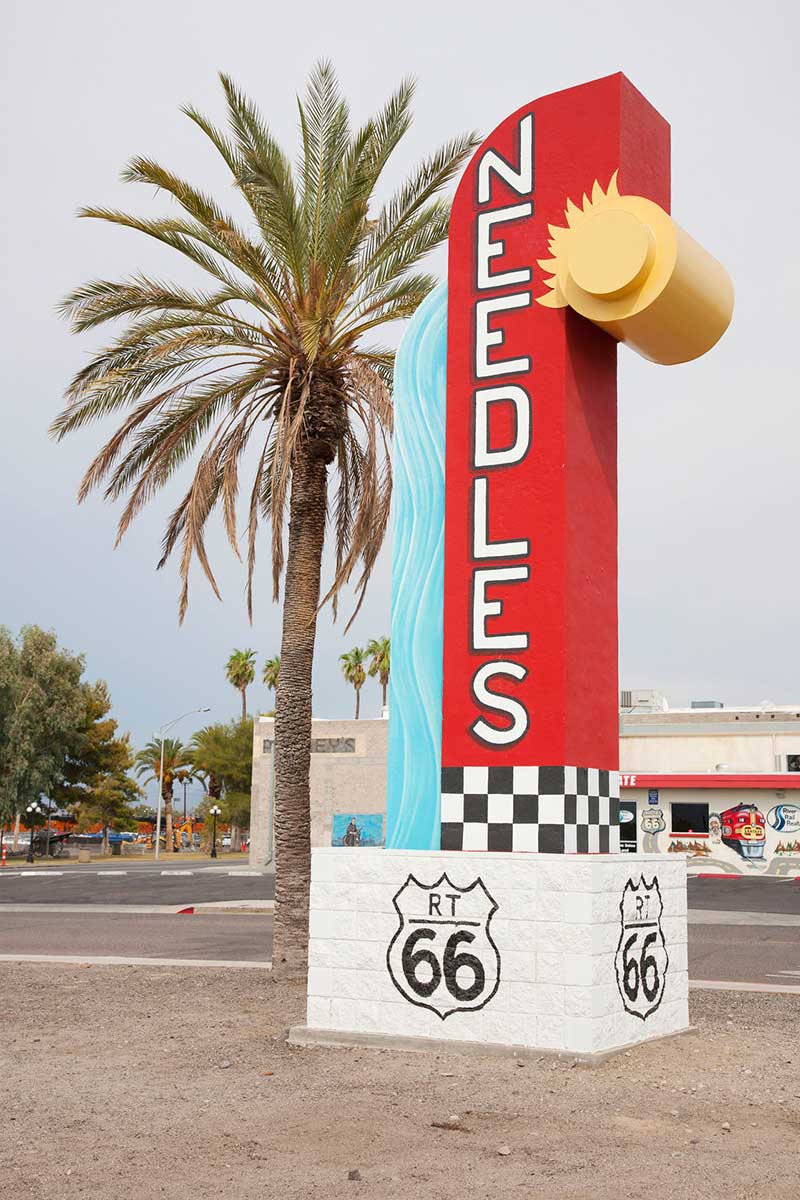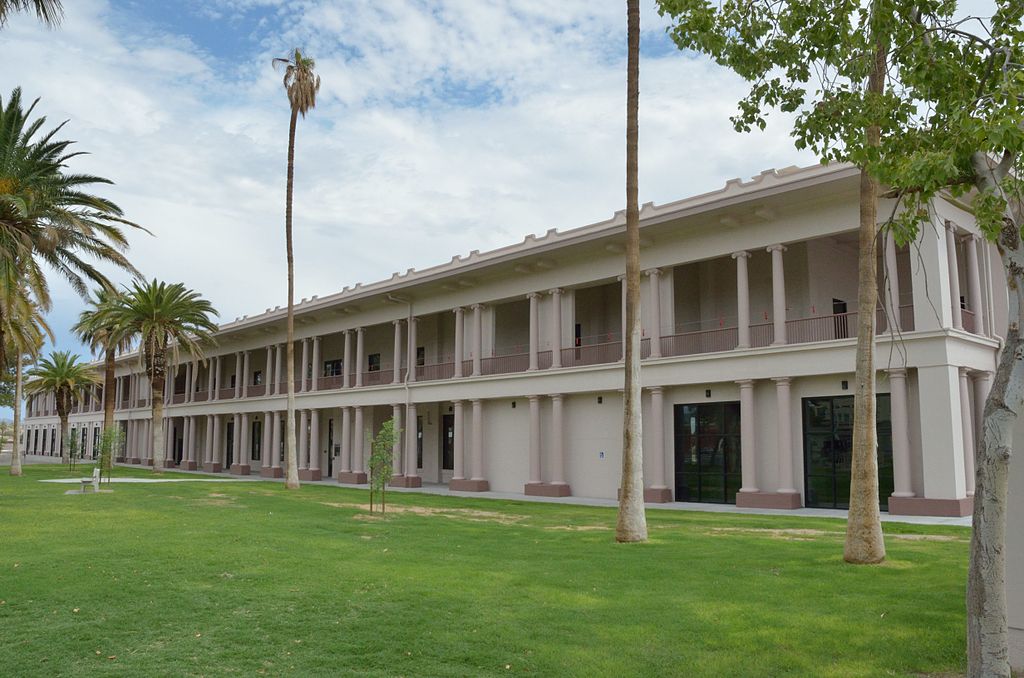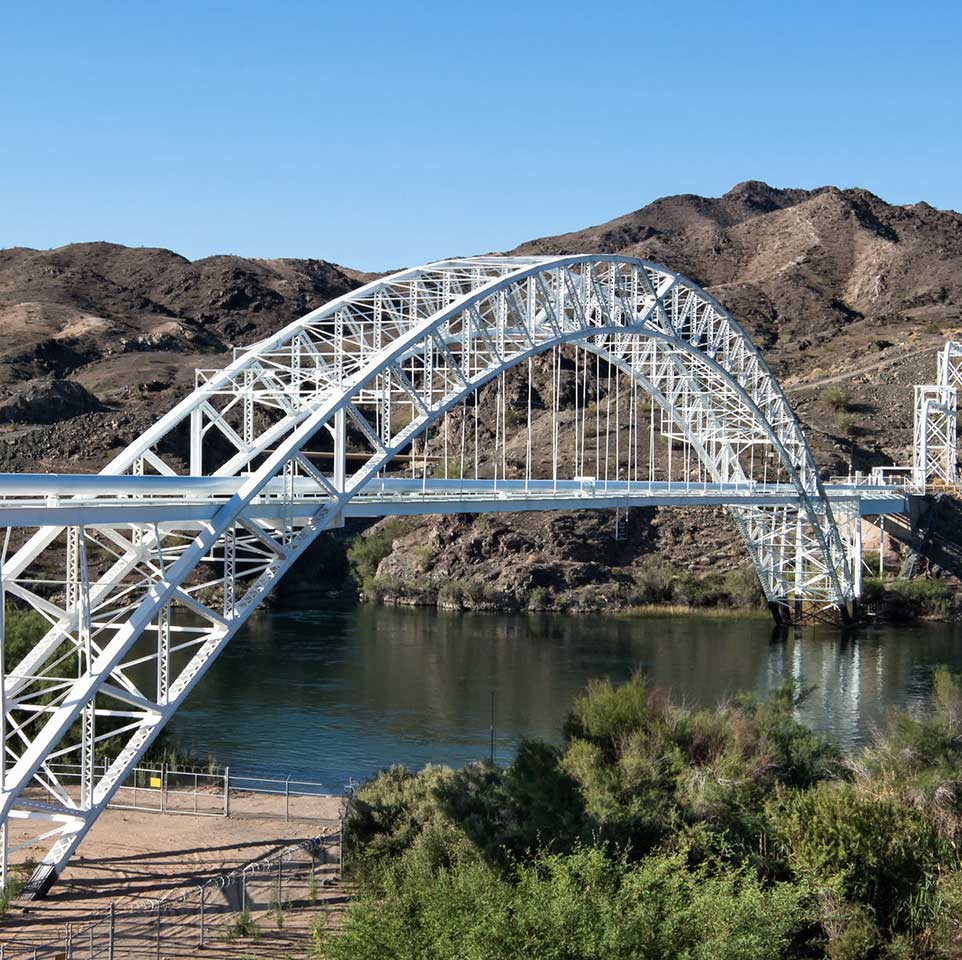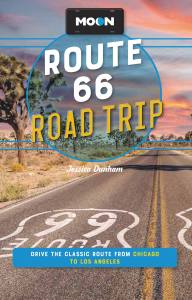Route 66 Through Needles, California
The town of Needles, named after a rock formation on the Arizona border, is the gateway to Route 66 in California. Founded in 1883, Needles is one of the oldest towns in San Bernardino County. In the late 1880s, the town operated as a major hub for the Santa Fe Railroad and served as an icing station for fruits and vegetables that were shipped from inland valley farms in California. In the 1930s, Needles became a welcome haven for Dust Bowl and Depression-era transplants escaping poverty, signifying they had made it to the “land of opportunity.”

But the town’s most famous resident might be Charles Shultz, the creator of the Peanuts comic strip. Shultz lived in Needles from 1928 to 1930. His short stint here inspired the creation of Snoopy’s brother Spike, a loner beagle who lived in the Mojave Desert. (Spike wore a trademark fedora and a long droopy mustache.) Several murals in Needles pay homage to one of Shultz’s most offbeat characters.
Route 66 through Needles
The original 1926-1947 alignment is not intact through Needles; it dead-ends into a sandy wash. However, the 1947-1966 alignment is drivable via Broadway Street.
1947-1966 Alignment
From I-40, take Exit 144 for U.S. 95 and make a slight right onto East Broadway Street (Historic Route 66). Broadway curves left past Quivera Street to become West Broadway Street as it continues through town. Turn left (west) onto Business I-40/Needles Highway for food and lodging.
1926-1947 Alignment
To drive part of the original 1926-1947 alignment, continue straight past Quivera Street onto Front Street. Turn left (south) onto F Street, then right (west) onto Quinn Court. At G Street, turn right (north) and then make the next left (west) onto Front Street. The El Garces Harvey House will be on the north side of Front Street.
Newsletter Signup
By clicking ‘Sign Up,’ I acknowledge that I have read and agree to Hachette Book Group’s Privacy Policy and Terms of Use
Sights
El Garces Harvey House
The El Garces Harvey House (950 Front St. at G St.) was built by Frances Wilson in 1908 to resemble a Greek temple; it operated as a freight and passenger depot with a hotel and restaurant. It was named after the Spanish Missionary and explorer Father Francisco Garcés. Fan palm trees surround the property with Tuscan columns, and El Garces was known as the “Crown Jewel” of Harvey Houses for its distinctive china, linens, silver, and quality service. The waitresses who worked there, called the Harvey Girls, said being assigned to work at the El Garces was like “going to Europe.” The lunchroom served 140 people and had two horseshoe counters.

The El Garces closed as a Harvey House in 1949. It was abandoned and under the threat of demolition until a group of local residents petitioned in 1993 to save it. In 2002, the National Park Service listed the El Garces on the National Register of Historic Places. It recently has undergone a $10 million restoration. Although it’s not yet open to the public, the exterior has been fully renovated to its former glory and is definitely worth seeing.
From I-40 west, take Exit 148 for Five Mile Road, which becomes East Broadway Street (Route 66). Stay on Broadway Street as it bears left through downtown. Turn right (north) onto G Street and drive straight to Front Street. The El Garces Harvey House sits right alongside the Santa Fe Railroad tracks.
Havasu National Wildlife Refuge
Havasu National Wildlife Refuge (free) is a birding hotspot and nature utopia on the California/Arizona border. The refuge provides habitat for 318 species of birds and more than 25 types of dragonflies; desert bighorn sheep scale steep rock faces while coyotes, bobcats, and foxes forage for food. Entrances to the refuge vary, but the park headquarters (317 Mesquite Ave., Needles, 760/326-3853, 7am-3:30pm Mon.-Fri.) is located in Needles. This should be your first stop for maps and information.
From I-40 in Needles, take the J Street exit (Exit 142) and turn left (southwest). Continue 0.6 miles, then turn right at the refuge entrance sign. Follow the signs to the administrative office.

Where to Stay and Eat
If you need a place to stay, the Rio Del Sol (1111 Pashard St., 760/326-5660, $70) offers clean, well-appointed rooms at a good price. The award-winning Juicy’s River Café (2411 W. Broadway St., 760/326-2233, 5:30am-10pm Sun.-Thurs., 5:30am-10:30pm Fri.-Sat. spring-fall; 5:30am-9:30pm Sun.-Thurs. winter, $6-15) has delicious food at down-to-earth prices. The Baja chicken melt served on parmesan sourdough is amazing.
The menu at The Wagon Wheel (2420 Needles Hwy., 760/326-4305, 5:30am-10pm daily, $7-16) was designed by famed Route 66 artist Bob Waldmire. The pot roast is slow-roasted and served with real mashed potatoes in classic 1970s-era digs. There’s also a gift shop on-site with Mother Road goodies.
Driving Tips
Route 66 from Needles to Barstow is notorious for temporary road closures due to fierce desert storms. Be safe and avoid driving over water on the road which could be a flash flood. (They happen in seconds and they are deadly.) Before venturing out, check Caltrans Road Closures to make sure it’s all clear. For areas that may be closed, take I-40 as an alternate route.
Newsletter Signup
By clicking ‘Sign Up,’ I acknowledge that I have read and agree to Hachette Book Group’s Privacy Policy and Terms of Use
Pin it for Later


